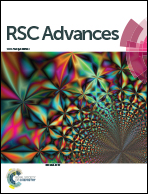Apatinib inhibits macrophage-mediated epithelial–mesenchymal transition in lung cancer
Abstract
Chemotherapy is one of the main treatment approaches for lung cancer. However, few drugs can be used in the post-first-line treatment of lung cancer. Apatinib is a small molecule inhibitor of vascular endothelial growth factor receptor-2 (VEGFR-2) and is widely used in advanced gastric cancer. This study aimed to investigate the therapeutic effect of apatinib in the second-line treatment of lung cancer and explore its underlying mechanism from the aspect of macrophage-mediated epithelial–mesenchymal transition (EMT). The results showed that apatinib attenuated macrophage-induced EMT and migration of lung cancer cells but not normal lung cells, as demonstrated by the loss of epithelial properties and gain of mesenchymal characteristics. Moreover, apatinib selectively decreased hepatocyte growth factor (HGF) secretion in polarized macrophages. Furthermore, apatinib down-regulated the expression of the HGF-Met signaling pathway in polarized macrophage-stimulated lung cancer cells. Taken together, our study has identified a novel pathway through which apatinib exerts its anti-cancer functions, and provided a molecular basis for apatinib potential applications in the post-first line treatment of lung cancer.



 Please wait while we load your content...
Please wait while we load your content...